干货|一个案例学会Spring Security 中使用 JWT
在前后端分离的项目中,登录策略也有不少,不过 JWT 算是目前比较流行的一种解决方案了,本文就和大家来分享一下如何将 Spring Security 和 JWT 结合在一起使用,进而实现前后端分离时的登录解决方案。
1 无状态登录
1.1 什么是有状态?
有状态服务,即服务端需要记录每次会话的客户端信息,从而识别客户端身份,根据用户身份进行请求的处理,典型的设计如Tomcat中的Session。例如登录:用户登录后,我们把用户的信息保存在服务端session中,并且给用户一个cookie值,记录对应的session,然后下次请求,用户携带cookie值来(这一步有浏览器自动完成),我们就能识别到对应session,从而找到用户的信息。这种方式目前来看最方便,但是也有一些缺陷,如下:
- 服务端保存大量数据,增加服务端压力
- 服务端保存用户状态,不支持集群化部署
1.2 什么是无状态
微服务集群中的每个服务,对外提供的都使用RESTful风格的接口。而RESTful风格的一个最重要的规范就是:服务的无状态性,即:
- 服务端不保存任何客户端请求者信息
- 客户端的每次请求必须具备自描述信息,通过这些信息识别客户端身份
那么这种无状态性有哪些好处呢?
- 客户端请求不依赖服务端的信息,多次请求不需要必须访问到同一台服务器
- 服务端的集群和状态对客户端透明
- 服务端可以任意的迁移和伸缩(可以方便的进行集群化部署)
- 减小服务端存储压力
1.3.如何实现无状态
无状态登录的流程:
- 首先客户端发送账户名/密码到服务端进行认证
- 认证通过后,服务端将用户信息加密并且编码成一个token,返回给客户端
- 以后客户端每次发送请求,都需要携带认证的token
- 服务端对客户端发送来的token进行解密,判断是否有效,并且获取用户登录信息
1.4 JWT
1.4.1 简介
JWT,全称是Json Web Token, 是一种JSON风格的轻量级的授权和身份认证规范,可实现无状态、分布式的Web应用授权:
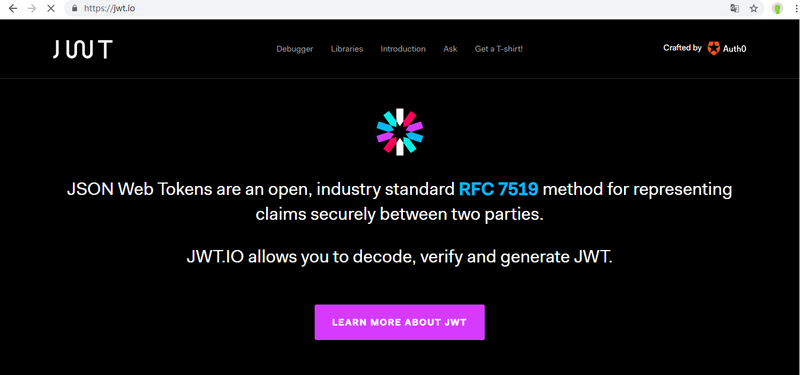
JWT 作为一种规范,并没有和某一种语言绑定在一起,常用的Java 实现是GitHub 上的开源项目 jjwt,地址如下: https://github.com/jwtk/jjwt
1.4.2 JWT数据格式
JWT包含三部分数据:
-
Header:头部,通常头部有两部分信息:
- 声明类型,这里是JWT
- 加密算法,自定义
我们会对头部进行Base64Url编码(可解码),得到第一部分数据。
-
Payload:载荷,就是有效数据,在官方文档中(RFC7519),这里给了7个示例信息:
- iss (issuer):表示签发人
- exp (expiration time):表示token过期时间
- sub (subject):主题
- aud (audience):受众
- nbf (Not Before):生效时间
- iat (Issued At):签发时间
- jti (JWT ID):编号
这部分也会采用Base64Url编码,得到第二部分数据。
- Signature:签名,是整个数据的认证信息。一般根据前两步的数据,再加上服务的的密钥secret(密钥保存在服务端,不能泄露给客户端),通过Header中配置的加密算法生成。用于验证整个数据完整和可靠性。
生成的数据格式如下图:

注意,这里的数据通过 . 隔开成了三部分,分别对应前面提到的三部分,另外,这里数据是不换行的,图片换行只是为了展示方便而已。
1.4.3 JWT交互流程
流程图:
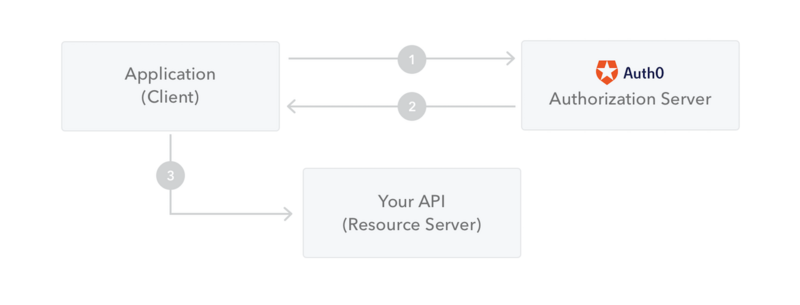
步骤翻译:
- 应用程序或客户端向授权服务器请求授权
- 获取到授权后,授权服务器会向应用程序返回访问令牌
- 应用程序使用访问令牌来访问受保护资源(如API)
因为JWT签发的token中已经包含了用户的身份信息,并且每次请求都会携带,这样服务的就无需保存用户信息,甚至无需去数据库查询,这样就完全符合了RESTful的无状态规范。
1.5 JWT 存在的问题
说了这么多,JWT 也不是天衣无缝,由客户端维护登录状态带来的一些问题在这里依然存在,举例如下:
- 续签问题,这是被很多人诟病的问题之一,传统的cookie+session的方案天然的支持续签,但是jwt由于服务端不保存用户状态,因此很难完美解决续签问题,如果引入redis,虽然可以解决问题,但是jwt也变得不伦不类了。
- 注销问题,由于服务端不再保存用户信息,所以一般可以通过修改secret来实现注销,服务端secret修改后,已经颁发的未过期的token就会认证失败,进而实现注销,不过毕竟没有传统的注销方便。
- 密码重置,密码重置后,原本的token依然可以访问系统,这时候也需要强制修改secret。
- 基于第2点和第3点,一般建议不同用户取不同secret。
2 实战
说了这么久,接下来我们就来看看这个东西到底要怎么用?
2.1 环境搭建
首先我们来创建一个Spring Boot项目,创建时需要添加Spring Security依赖,创建完成后,添加 jjwt 依赖,完整的pom.xml文件如下:
<dependency>
<groupId>org.springframework.boot</groupId>
<artifactId>spring-boot-starter-security</artifactId>
</dependency>
<dependency>
<groupId>org.springframework.boot</groupId>
<artifactId>spring-boot-starter-web</artifactId>
</dependency>
<dependency>
<groupId>io.jsonwebtoken</groupId>
<artifactId>jjwt</artifactId>
<version>0.9.1</version>
</dependency>
然后在项目中创建一个简单的 User 对象实现 UserDetails 接口,如下:
public class User implements UserDetails {
private String username;
private String password;
private List<GrantedAuthority> authorities;
public String getUsername() {
return username;
}
@Override
public boolean isAccountNonExpired() {
return true;
}
@Override
public boolean isAccountNonLocked() {
return true;
}
@Override
public boolean isCredentialsNonExpired() {
return true;
}
@Override
public boolean isEnabled() {
return true;
}
//省略getter/setter
}
这个就是我们的用户对象,先放着备用,再创建一个HelloController,内容如下:
@RestController
public class HelloController {
@GetMapping("/hello")
public String hello() {
return "hello jwt !";
}
@GetMapping("/admin")
public String admin() {
return "hello admin !";
}
}
HelloController 很简单,这里有两个接口,设计是 /hello 接口可以被具有 user 角色的用户访问,而 /admin 接口则可以被具有 admin 角色的用户访问。
2.2 JWT 过滤器配置
接下来提供两个和 JWT 相关的过滤器配置:
- 一个是用户登录的过滤器,在用户的登录的过滤器中校验用户是否登录成功,如果登录成功,则生成一个token返回给客户端,登录失败则给前端一个登录失败的提示。
- 第二个过滤器则是当其他请求发送来,校验token的过滤器,如果校验成功,就让请求继续执行。
这两个过滤器,我们分别来看,先看第一个:
public class JwtLoginFilter extends AbstractAuthenticationProcessingFilter {
protected JwtLoginFilter(String defaultFilterProcessesUrl, AuthenticationManager authenticationManager) {
super(new AntPathRequestMatcher(defaultFilterProcessesUrl));
setAuthenticationManager(authenticationManager);
}
@Override
public Authentication attemptAuthentication(HttpServletRequest req, HttpServletResponse resp) throws AuthenticationException, IOException, ServletException {
User user = new ObjectMapper().readValue(req.getInputStream(), User.class);
return getAuthenticationManager().authenticate(new UsernamePasswordAuthenticationToken(user.getUsername(), user.getPassword()));
}
@Override
protected void successfulAuthentication(HttpServletRequest req, HttpServletResponse resp, FilterChain chain, Authentication authResult) throws IOException, ServletException {
Collection<? extends GrantedAuthority> authorities = authResult.getAuthorities();
StringBuffer as = new StringBuffer();
for (GrantedAuthority authority : authorities) {
as.append(authority.getAuthority())
.append(",");
}
String jwt = Jwts.builder()
.claim("authorities", as)//配置用户角色
.setSubject(authResult.getName())
.setExpiration(new Date(System.currentTimeMillis() + 10 * 60 * 1000))
.signWith(SignatureAlgorithm.HS512,"sang@123")
.compact();
resp.setContentType("application/json;charset=utf-8");
PrintWriter out = resp.getWriter();
out.write(new ObjectMapper().writeValueAsString(jwt));
out.flush();
out.close();
}
protected void unsuccessfulAuthentication(HttpServletRequest req, HttpServletResponse resp, AuthenticationException failed) throws IOException, ServletException {
resp.setContentType("application/json;charset=utf-8");
PrintWriter out = resp.getWriter();
out.write("登录失败!");
out.flush();
out.close();
}
}
关于这个类,我说如下几点:
,
再来看第二个token校验的过滤器:
public class JwtFilter extends GenericFilterBean {
@Override
public void doFilter(ServletRequest servletRequest, ServletResponse servletResponse, FilterChain filterChain) throws IOException, ServletException {
HttpServletRequest req = (HttpServletRequest) servletRequest;
String jwtToken = req.getHeader("authorization");
System.out.println(jwtToken);
Claims claims = Jwts.parser().setSigningKey("sang@123").parseClaimsJws(jwtToken.replace("Bearer",""))
.getBody();
String username = claims.getSubject();//获取当前登录用户名
List<GrantedAuthority> authorities = AuthorityUtils.commaSeparatedStringToAuthorityList((String) claims.get("authorities"));
UsernamePasswordAuthenticationToken token = new UsernamePasswordAuthenticationToken(username, null, authorities);
SecurityContextHolder.getContext().setAuthentication(token);
filterChain.doFilter(req,servletResponse);
}
}
关于这个过滤器,我说如下几点:
- 首先从请求头中提取出 authorization 字段,这个字段对应的value就是用户的token。
- 将提取出来的token字符串转换为一个Claims对象,再从Claims对象中提取出当前用户名和用户角色,创建一个UsernamePasswordAuthenticationToken放到当前的Context中,然后执行过滤链使请求继续执行下去。
如此之后,两个和JWT相关的过滤器就算配置好了。
2.3 Spring Security 配置
接下来我们来配置 Spring Security,如下:
@Configuration
public class WebSecurityConfig extends WebSecurityConfigurerAdapter {
@Bean
PasswordEncoder passwordEncoder() {
return NoOpPasswordEncoder.getInstance();
}
@Override
protected void configure(AuthenticationManagerBuilder auth) throws Exception {
auth.inMemoryAuthentication().withUser("admin")
.password("123").roles("admin")
.and()
.withUser("sang")
.password("456")
.roles("user");
}
@Override
protected void configure(HttpSecurity http) throws Exception {
http.authorizeRequests()
.antMatchers("/hello").hasRole("user")
.antMatchers("/admin").hasRole("admin")
.antMatchers(HttpMethod.POST, "/login").permitAll()
.anyRequest().authenticated()
.and()
.addFilterBefore(new JwtLoginFilter("/login",authenticationManager()),UsernamePasswordAuthenticationFilter.class)
.addFilterBefore(new JwtFilter(),UsernamePasswordAuthenticationFilter.class)
.csrf().disable();
}
}
- 简单起见,这里我并未对密码进行加密,因此配置了NoOpPasswordEncoder的实例。
- 简单起见,这里并未连接数据库,我直接在内存中配置了两个用户,两个用户具备不同的角色。
- 配置路径规则时,
/hello接口必须要具备 user 角色才能访问,/admin接口必须要具备 admin 角色才能访问,POST 请求并且是/login接口则可以直接通过,其他接口必须认证后才能访问。 - 最后配置上两个自定义的过滤器并且关闭掉csrf保护。
2.4 测试
做完这些之后,我们的环境就算完全搭建起来了,接下来启动项目然后在 POSTMAN 中进行测试,如下:
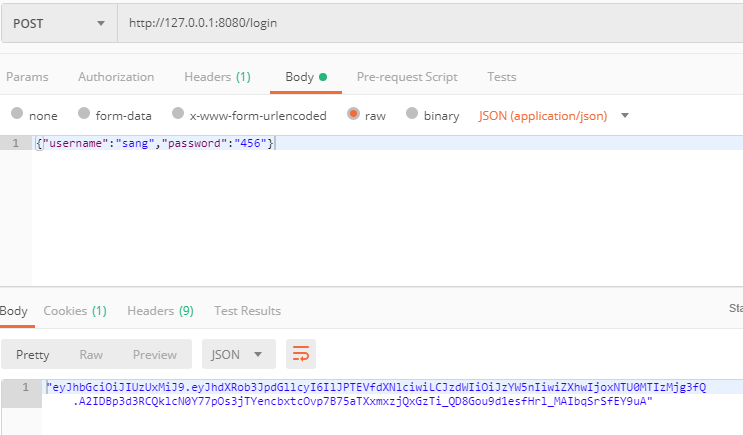
登录成功后返回的字符串就是经过 base64url 转码的token,一共有三部分,通过一个 . 隔开,我们可以对第一个 . 之前的字符串进行解码,即Header,如下:

再对两个 . 之间的字符解码,即 payload:

可以看到,我们设置信息,由于base64并不是加密方案,只是一种编码方案,因此,不建议将敏感的用户信息放到token中。
接下来再去访问 /hello 接口,注意认证方式选择 Bearer Token,Token值为刚刚获取到的值,如下:
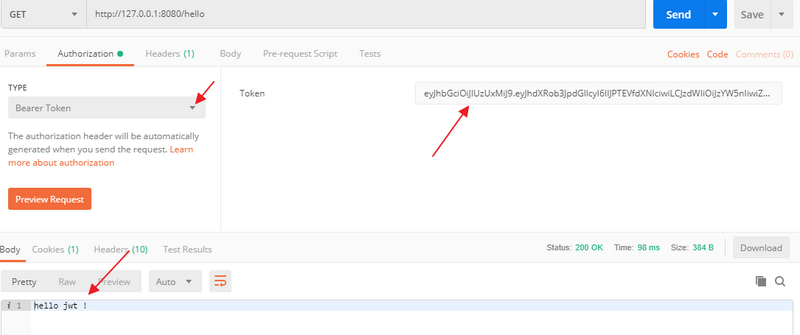
可以看到,访问成功。
总结
这就是 JWT 结合 Spring Security 的一个简单用法,讲真,如果实例允许,类似的需求我还是推荐使用 OAuth2 中的 password 模式。
不知道大伙有没有看懂呢?如果没看懂,松哥还有一个关于这个知识点的视频教程,如下:
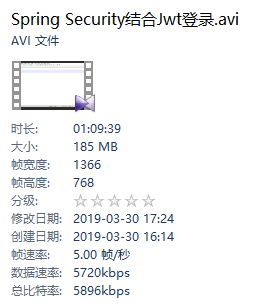
如何获取这个视频教程呢?很简单,将本文转发到一个超过100人的微信群中(QQ群不算,松哥是群主的微信群也不算,群要为Java方向),或者多个微信群中,只要累计人数达到100人即可,然后加松哥微信,截图发给松哥即可获取资料。
- 本文标签: ACE 压力 服务端 IDE 实例 加密 服务器 QQ群 git mapper map GitHub 分布式 value authenticate Word 数据库 MQ redis parse stream web 开源 tomcat bean 密钥 Spring Security API key 认证 http tar Collection 数据 App 微服务 java 总结 servlet Security 集群 Spring Boot RESTful XML 部署 测试 src js IO UI 时间 session spring REST Authorization cat id 开源项目 json tk 翻译 build https 图片 配置 需求 token rmi list pom
- 版权声明: 本文为互联网转载文章,出处已在文章中说明(部分除外)。如果侵权,请联系本站长删除,谢谢。
- 本文海报: 生成海报一 生成海报二











![[HBLOG]公众号](https://www.liuhaihua.cn/img/qrcode_gzh.jpg)

